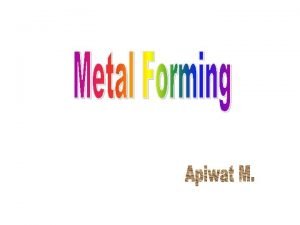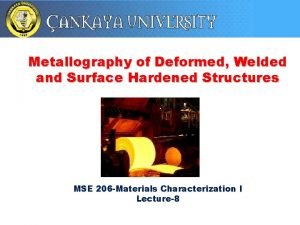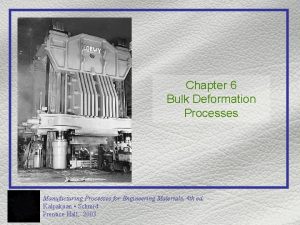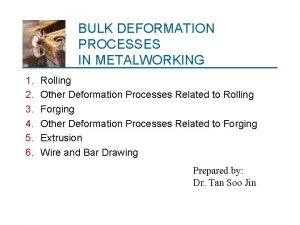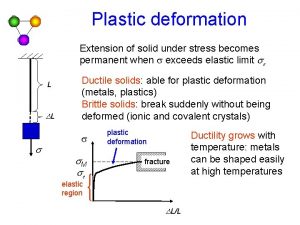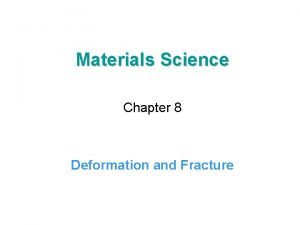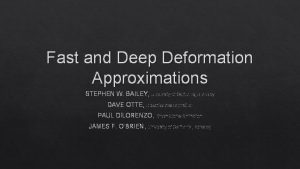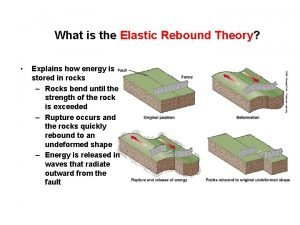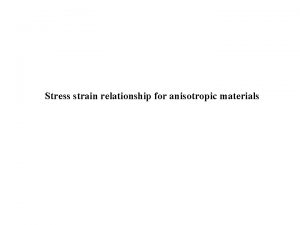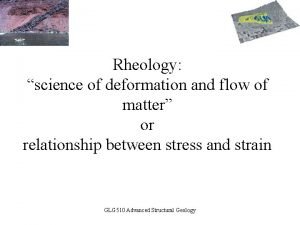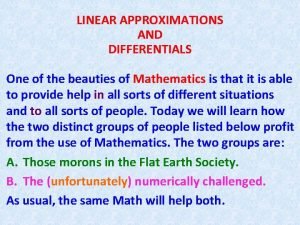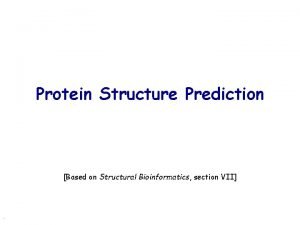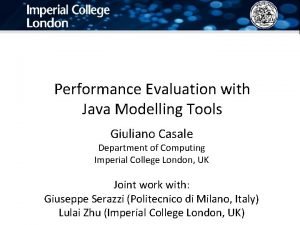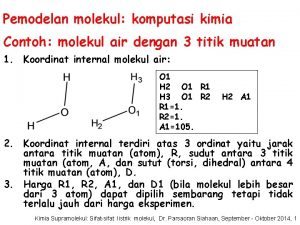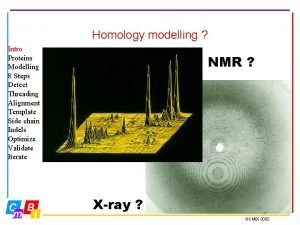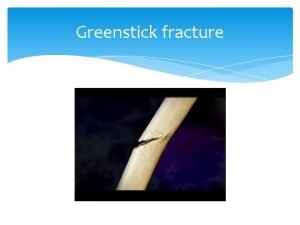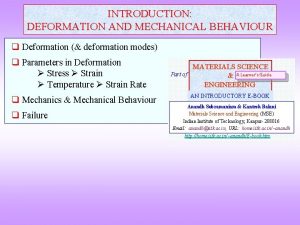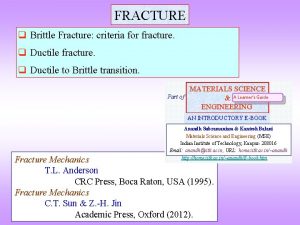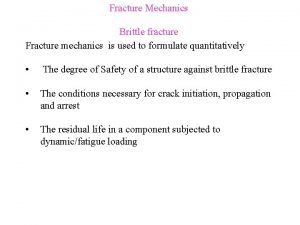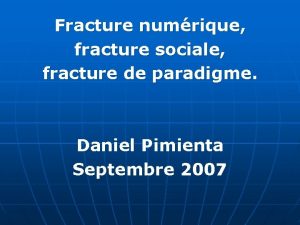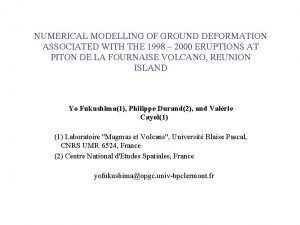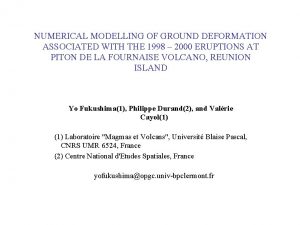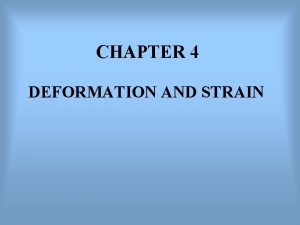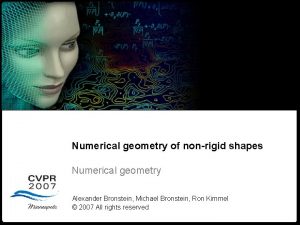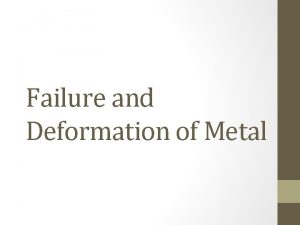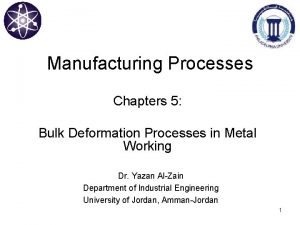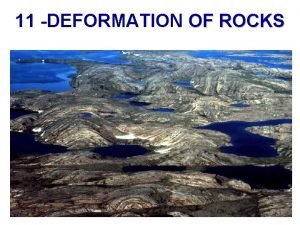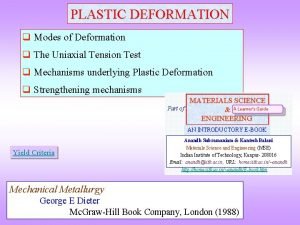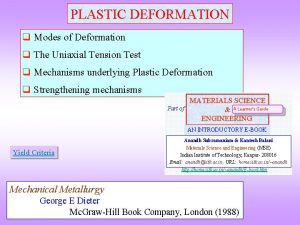Numerical Modelling of Deformation and Fracture Processes of



























- Slides: 27

Numerical Modelling of Deformation and Fracture Processes of NPP Equipment Elements Моделирование процессов деформирования и разрушения материалов и элементов оборудования АЭС Kharchenko V. Харченко В. В. G. S. Pisarenko Institute for Problems of Strength Институт проблем прочности им. Г. С. Писаренко НАН Украины 1 st Hungarian-Ukrainian Joint Conference on «Safety-Reliability and Risk of Engineering Plants and Components » Miskolc , Hungary April 2006

About 50% of the electric power produced in Ukraine is generated by the NPPs. Now there are 15 units— 13 VVER 1000 and 2 VVER-440—operated in Ukraine. But, as seen from Table, half of the units have been operated for over 20 years. So, Extension of the NPP Service Life is one of the most important strategical tasks of the nuclear industry Operating reliability and extension of the NPP service life depend on the solution of the problems concerning the structural strength of equipment

Creation of the scientific fundamentals for determining the strength and life of NPP equipment A great deal has been done by the Institutes of the National Academy of Sciences of Ukraine for the development of the nuclear science and technology including the following: • Development of the procedures and unique equipment for testing NPP structural materials, including those under irradiation conditions • Development of the procedures and software packages for simulation of NPP equipment elements • Investigation of deformation and fracture, determination of the mechanical properties of structural steels under various conditions of thermo-mechanical loading and a complex stress state • Investigation of the stress-strain state of materials and NPP equipment elements • Development of the strength (fracture) criteria Now we’ll say about IPS results of numerical modeling

Development of the methods and software for the stress-strain state calculations for complex three-dimensional structures Mixed schemes of the finiteelement method (MFEM) for thermoelasticity and thermoplasticity Original Software RELAX, SPACE, PIPE, ИМПРО, and other packages Tests: • Pure bending of the beam • Three-point bending of the beam with the edge crack, etc

Examples of the Test Tasks Solution Pure bending of the beam n Error in the stress determination Three-point bending of the beam with the edge crack Error in the SIF determination Our MFEM

Evaluation of the Validity and Accuracy of the Modeling Schemes Accuracy of Different Software and Meshes Different FE Meshes Comparison of Calculation and Measurements • Stresses σZ on the outer surface of the welded joint in the region of strain gage mounting: • 1 – numerical calculation (P 1/P 2 = 16/6 MPa, M = 2. 279 MH m); • 2 – data of full-scale strain measurements

Modeling of the Behavior of Materials and Structural Elements • Modeling of material testing under static, cyclic and dynamic loadings (tension, compression, impact toughness) • Modeling of the strain-stress state kinetics in the processes of manufacture and maintenance (cutting, pipe pressing-in, thermal treatment) • Modeling of behavior of NPP equipment elements (reactor pressure vessel, steam generator, protective structures) under service loads

Numerical modeling of material testing. Various schemes of dynamic testing

Tension Testing Modelling Smooth cylindrical specimen Specimens Calculation scheme Specimen with concentrator R 2

Calculation Charpy Testing Modelling Time variation of the load on the knife-edge Experiment

Repeated Loading Modelling The variation of the stress state at the crack (or concentrator) tip indicated that the plastic deformation region changes its shape and the accumulation of residual plastic strains occurs after each cycle. Further investigation will deal with the analysis of damage accumulation at the crack (or concentrator) tip and assessment of the applicability of various fracture criteria under such loading conditions. loading unloading

STRESS-STRAIN STATE FEATURES OF STEAM GENERATOR ELEMENT WITH THE CONCENTRATOR UNDER REPEATED-STATIC LOADING • 2 • 4 • 3 • 1 Modeling scheme for the steam generator component and the fragment of the finite element meshing in the defect region. • 5 Stress Distribution in the region of a concentrator 1 mm in depth under pressures P 1 and P 2: 1 – radial stresses, 2 – axial stresses, 3 – tangential stresses, 4 – equivalent stresses under loading, 5 – axial stresses under unloading.

MATERIAL TESTING AND NUMERICAL MODELLING FOR INTEGRITY AND LIFETIME ASSESSMENT OF NPP COMPONENT - Reactor pressure vessel; - Steam generators; - Pipelines Primary Circuit of WWER NPP

STRENGTH AND LIFE CALCULATION of reactor pressure vessels of NPPs Neutron fluence in pressure vessel wall Ф(x, y, z) Residual stresses Key issues Conditions of inservice thermomechanical loading, specifically in emergency events – thermal shock Mechanical properties of base metal, welds, cladding and their in-service degradation Stress state, temperature fields, thermal hydraulics, Defects (actual and hypothetical) Strength of RPVs with cracks - limit state criteria; - postulation of cracks - calculation of SIF KJ - fracture toughness KJС

Temperature and Stresses in RPV 3 D Model Stress in RPV weld Temperature in RPV wall Stress in RPV wall

When assessing the RPV structural integrity, the accuracy of determination of changes in the stress intensity factor (SIF) value under thermal shock conditions also plays an important part. The SIF value and peculiarities of its variation in time are affected by a large number of factors: sizes and locations of cracks; loading conditions; metal characteristics; accuracy of calculation methods and schemes; and so on. Stress intensity factor versus crack-tip temperature (plastic calculation), from NUREG/CR-6651, Task T 1 C 2

RPV with a built-in crack Geometrical model Crack location area Finite element grid: a) –in the vicinity of the crack; b) – in the cross section of the crack front

RPV with a built-in crack Hoop strains in the zone of the built-in longitudinal half -elliptical crack Crack location area Variation in the stress intensity factor KI along the longitudinal half-elliptical crack front under PTS a/c = 2/3, a/t = 1/10

Crack propagation and arrest in RPV wall under PTS • 4 • 3 • 1 • 2 • 4 • 3 • 1 • 2 • 4 • 3 • 2 • 1 • Si, Sy, Ey in crack tip: 1 – t=0. 3 ms, 2 – t=0. 5 ms, 3 – t=0. 66 ms, 4 – t=0. 83 ms. Crack velocity.

Structural Integrity and Lifetime of Steam Generator Elements with damage: -Heat-change tubes - Collectors -Weld 111 Crack place Experimental Data on-line 3 D Calculation Scheme Key problems analysis experimental data stress calculation Integrity and Lifetime Assessment

3 -D Models for Stress Modeling of the SG Element

Evaluation of the Validity and Accuracy of the Modeling Schemes Accuracy of Different Software and Meshes Different FE Meshes Comparison of Calculation and Measurements • Stresses σZ on the outer surface of the welded joint in the region of strain gage mounting: • 1 – numerical calculation (P 1/P 2 = 16/6 MPa, M = 2. 279 MH m); • 2 – data of full-scale strain measurements


Simulation of the Stress-Strain State Kinetics in Manufacturing and Maintenance Pressing-in of pipes into the steam generator collector Local thermal treatment of the SG shell and collector assembly after maintenance Temperature distribution Schematic of the SG Element and mounting of heating elements: 1 - steam generator shell with heat insulation; 2 – nozzle; 3 – “pocket”; 4 – heat insulation; 5 - welded joint; 6 – heating elements; 7 –collector; 8 – heat insulation plugs

Residual Stresses of the SG Element after Local Thermal Treatment Equivalent Stresses а) - φ = π; b) - φ = 0 Resume: Local Stresses are High Level in SG Element after Local Thermal Treatment and under Service Loads Distribution of the residual stresses acting on the “pocket” surface on the side of the nozzle 20 mm away from its bottom (from the results of three-dimensional computations): tangential stresses (1); axial stresses Z (2); i (3)

Conclusions In our opinion the important research directions are as follows : • Development and harmonization of standards for the structural integrity and lifetime assessment • Development of procedures for structural integrity and lifetime calculation (including those taking into account crack propagation and arrest) • Improvement of strength (fracture) criteria • Development of experimental methods for determining metal degradation and obtaining additional information • Improvement of correlation dependences between mechanical metal characteristics obtained by various methods • Improvement of calculation methods for assessment of strain-stress state, fracture mechanics parameters and their application to problems of structural integrity and to risk-based methods

Summary Thank You For Attention !
 Elastic compliance and stiffness constants
Elastic compliance and stiffness constants Defect
Defect Bulk deformation processes
Bulk deformation processes Fundamentals of metal forming
Fundamentals of metal forming Surface hardening process
Surface hardening process Bulk deformation processes
Bulk deformation processes Bulk deformation processes
Bulk deformation processes Deformation processes include which of the following
Deformation processes include which of the following Ductile fracture surface
Ductile fracture surface Concurrent in os
Concurrent in os Define geometric modelling
Define geometric modelling Modelling relationships and trends in data
Modelling relationships and trends in data Problem solving and modelling task example
Problem solving and modelling task example Plastic region
Plastic region Elastic and plastic deformation
Elastic and plastic deformation Stephen w bailey
Stephen w bailey How volcanoes form
How volcanoes form Orthotropic and anisotropic materials
Orthotropic and anisotropic materials Deformation and flow of matter
Deformation and flow of matter Linear approximations and differentials
Linear approximations and differentials Technological modelling
Technological modelling Homology modelling steps
Homology modelling steps Java modelling tools
Java modelling tools Molecular modelling laboratory
Molecular modelling laboratory Modelling madness what's new
Modelling madness what's new Rich interaction
Rich interaction Private equity case study presentation
Private equity case study presentation Homology modelling steps
Homology modelling steps



